Circuses have long fascinated audiences with their exotic and thrilling spectacles.
Among the most controversial aspects of these performances has been the use of wild animals, taken from their natural habitats and trained to perform tricks for entertainment.
This article explores 15 wild animals that were once commonly forced to perform in circuses, highlighting their unique characteristics and the roles they played under the big top.
Each entry provides insight into the lives of these animals, from their origins in the wild to their experiences in the circus ring.
Elephants

Elephants, known for their intelligence and gentle demeanor, once stood as the grand symbol of circus extravagance. These magnificent creatures were coerced into performing intricate tricks. With their powerful trunks and immense size, elephants were a spectacle to behold.
Trainers often relied on harsh methods to ensure obedience. Despite their strength, elephants were sensitive beings, forming close bonds with their herd. Their forced separation and demanding routines took a toll on their mental and physical well-being.
Today, many circuses have retired elephants, acknowledging the need for their protection and welfare.
Tigers
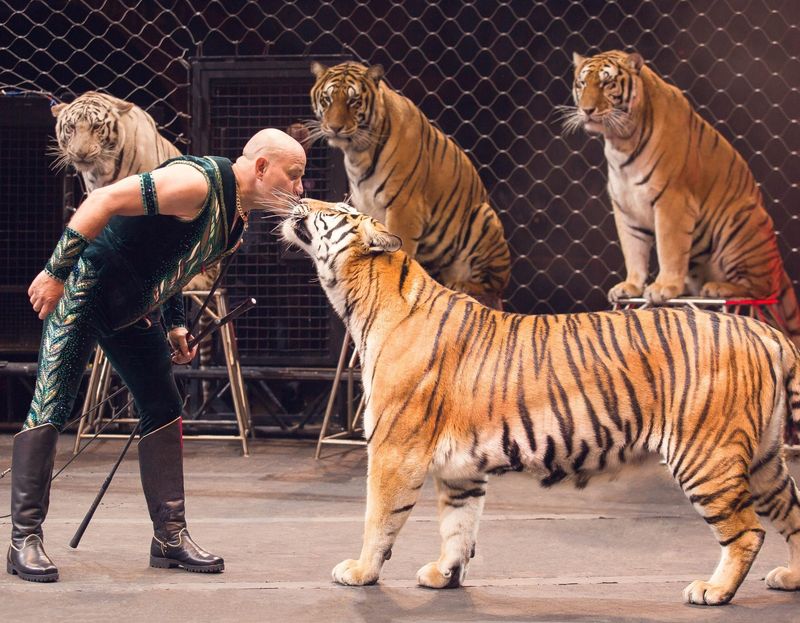
Tigers, with their striking stripes and commanding presence, were often the stars of the circus. These apex predators were trained to perform dangerous acts, such as jumping through rings of fire.
Their natural instincts were suppressed through rigorous training, changing their behavior dramatically. Yet, their fierce nature was always on the brink of resurgence.
Remarkably adaptable, tigers endured life on the road but at a significant cost. The move towards conservation has since helped shift the focus to protecting these majestic cats in their natural habitat.
Lions

Lions, the so-called kings of the jungle, were crowd favorites, capturing the public’s imagination with their regal manes and powerful roars. Their performances were designed to highlight their strength and agility.
Underneath their imposing exterior, lions craved social structures akin to their wild prides. The life of a circus lion was far removed from their natural social networks, leading to stress and behavioral issues.
As awareness grew, efforts to preserve lions in the wild have gained momentum, focusing on their natural behaviors and habitats.
Bears
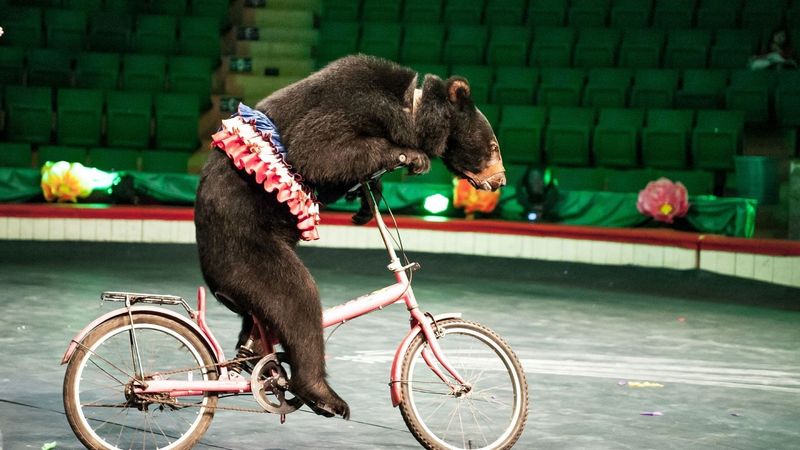
Bears, with their impressive size and endearing appearance, were trained to execute amusing antics, often dressed in costumes. These acts capitalized on their ability to stand and move on two legs.
However, the training methods were often cruel, disregarding the bear’s natural instincts and needs. Bears are solitary animals, and the confinement and forced interaction were unnatural for them.
As a result, many bears exhibited signs of distress. Today, the focus has shifted towards rehabilitation and conservation of bears in the wild.
Chimpanzees

Chimpanzees, known for their playful and intelligent nature, were often dressed in human-like costumes and trained to mimic human behaviors. Their performances were intended to amuse and entertain.
While these acts showcased their intelligence, they also masked the stress and discomfort these primates experienced. Outside their natural social structures, chimpanzees often displayed anxiety and frustration.
Efforts are now directed towards preserving their natural habitats and ensuring these intelligent beings can thrive without human interference.
Zebras

Zebras, with their distinctive stripes, added an exotic flair to circus parades and performances. Often paired with horses, they were trained to perform synchronized routines that captivated audiences.
Unlike domesticated animals, zebras are wild and untamed, making their training challenging and stressful. They thrive in open savannas, not confined arenas.
The realization of their needs has led to a decline in using zebras for entertainment, and efforts are made to protect their natural habitats and promote their welfare.
Camels

Camels, often seen as the exotic allure of the circus, were paraded for their unique humped appearance and endurance. Known as the ‘ships of the desert,’ they were accustomed to harsh climates and long journeys.
Their use in circuses involved performing tricks and participating in parades. However, the circus environment was vastly different from their natural habitat, causing stress and discomfort.
Today, there is a growing awareness of the importance of preserving desert ecosystems and respecting the natural lives of these resilient creatures.
Kangaroos
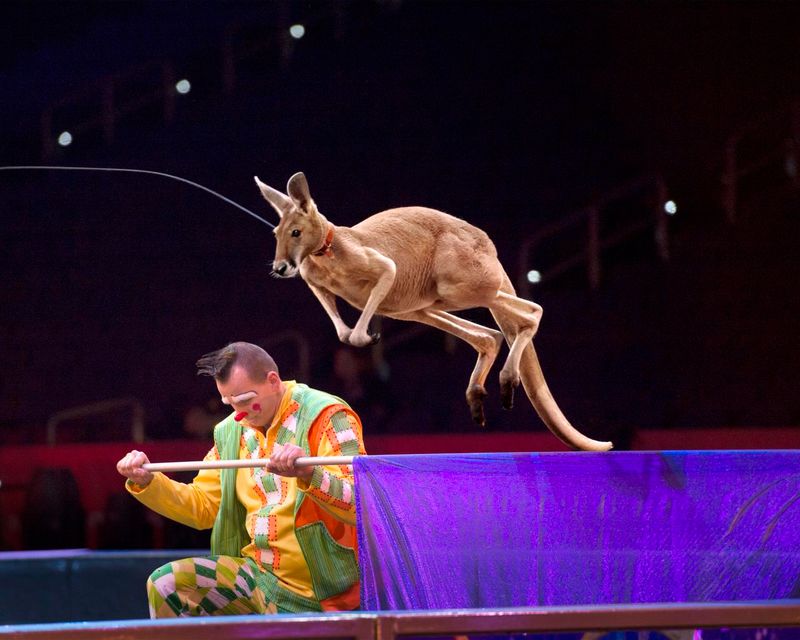
Kangaroos, symbols of Australia, fascinated circus-goers with their incredible hopping abilities. These marsupials were trained to perform impressive jumps and tricks, captivating audiences with their agility.
However, the circus setting was alien to their natural environment, which often led to stress and anxiety. Kangaroos are social animals, and the isolation of circus life affected their well-being.
Efforts have shifted towards conservation, focusing on preserving their natural habitats and ensuring they can thrive in the wild.
Seals

Seals, with their playful nature and aquatic grace, were popular circus performers. Known for balancing balls on their noses and playing instruments, their acts delighted audiences.
Despite their charm, life in a circus was far from ideal. Seals are naturally social and thrive in ocean habitats, not confined spaces.
The movement toward marine conservation has helped raise awareness about the importance of protecting seals and their natural environments, shifting away from using them in entertainment.
Horses
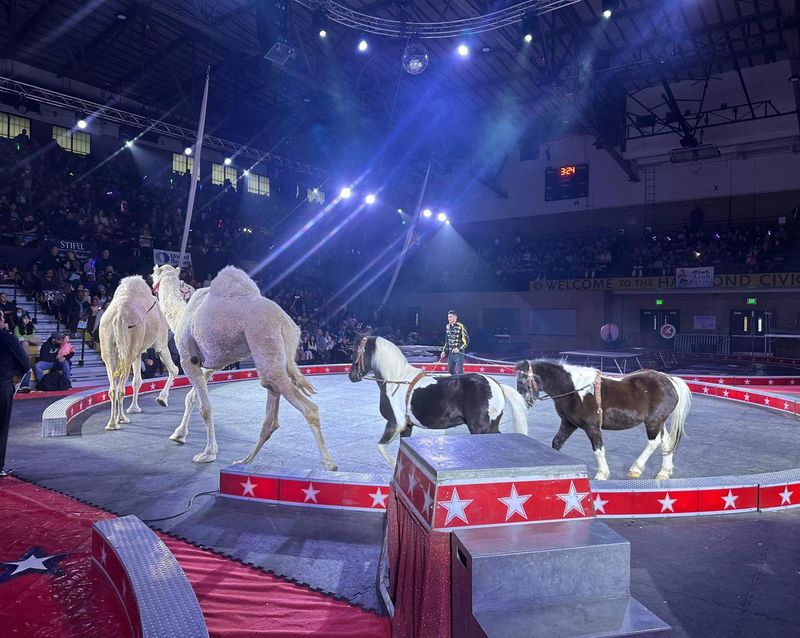
Horses have been an integral part of circuses, known for their grace and beauty. They were trained to perform intricate maneuvers, showcasing their agility and strength.
While some horses thrived in this environment, others faced challenges due to the demanding training and constant travel. Horses are social animals and can experience stress in confined spaces.
Modern circuses are increasingly focusing on humane treatment and partnering with equestrian experts to enhance horse welfare both in performances and beyond.
Leopards
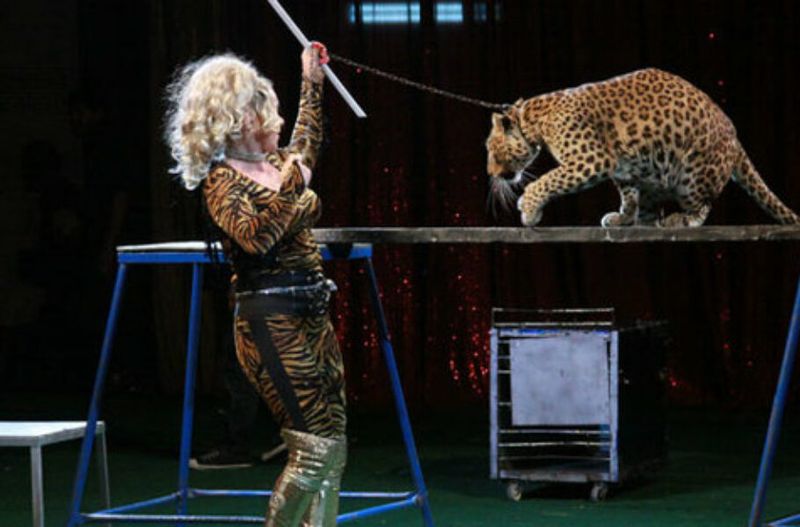
Leopards, with their spotted coats and stealthy movements, were trained to perform agile feats in circuses. Their acts often included jumping through hoops and climbing structures, impressing audiences with their grace.
However, this life was a stark contrast to their solitary nature in the wild. Leopards are instinctively independent, and the circus environment strained their natural behaviors.
Conservation efforts now aim to protect leopards in their natural habitats, focusing on preserving their independence and natural instincts.
Baboons
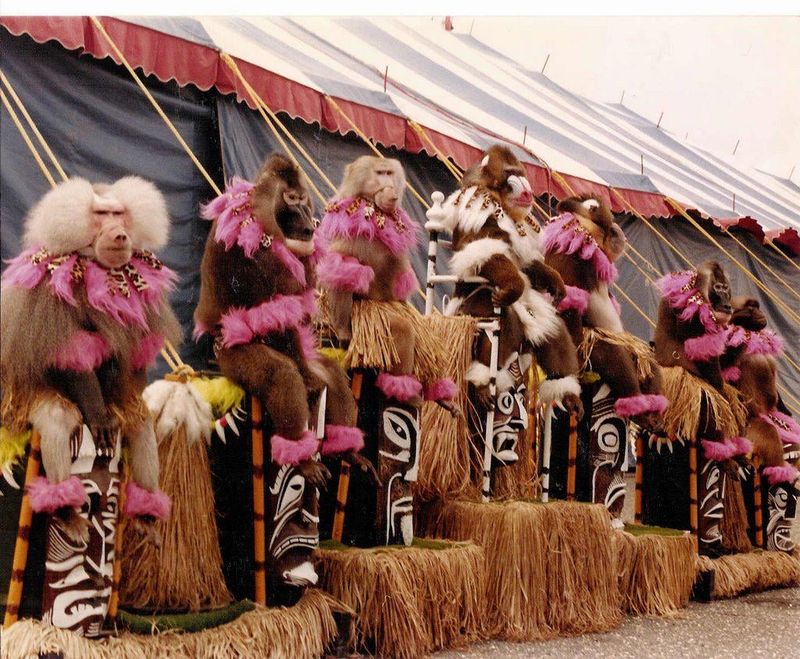
Baboons, known for their social dynamics and intelligence, were dressed in costumes and trained to perform comedic acts. Their lively and playful nature made them a hit with audiences.
Despite their captivating performances, baboons often suffered from stress and anxiety due to their unnatural living conditions. In the wild, they thrive in complex social groups.
Efforts to protect their natural environments and reduce their use in entertainment are underway, ensuring these intelligent primates can live fulfilling lives.
Rhinoceroses
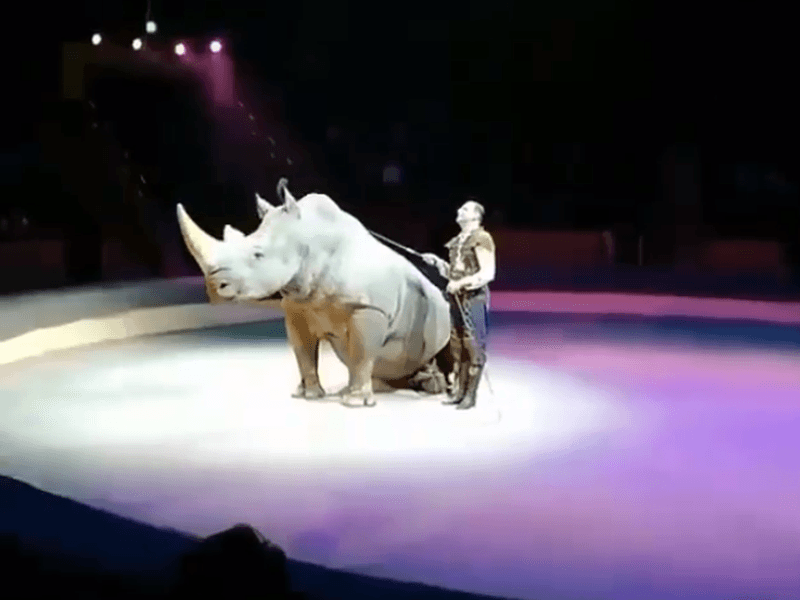
Rhinoceroses, with their imposing presence and unique horns, were captivating additions to circus parades. Their strength and size made them a spectacle to behold.
However, the constraints of circus life were unsuitable for these solitary giants. Rhinos thrive in vast, open spaces, not confined arenas.
The focus has shifted to conservation, aiming to protect their natural habitats and ensure the survival of these magnificent creatures.
Giraffes
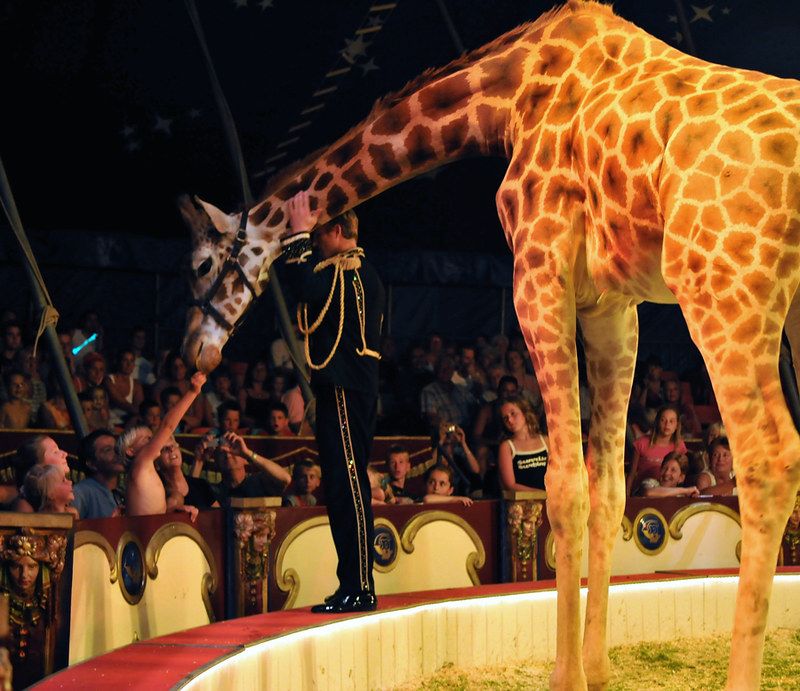
Giraffes, with their towering necks and gentle demeanor, were exotic attractions in circuses. They were paraded for their distinct appearance, often alongside other animals.
Yet, the circus environment was challenging for giraffes, who thrive in vast savannas with plenty of space to roam. The stress of confinement affected their health and well-being.
Awareness of their needs has led to a decrease in their use for entertainment, focusing instead on conserving their natural habitats.
Hyenas
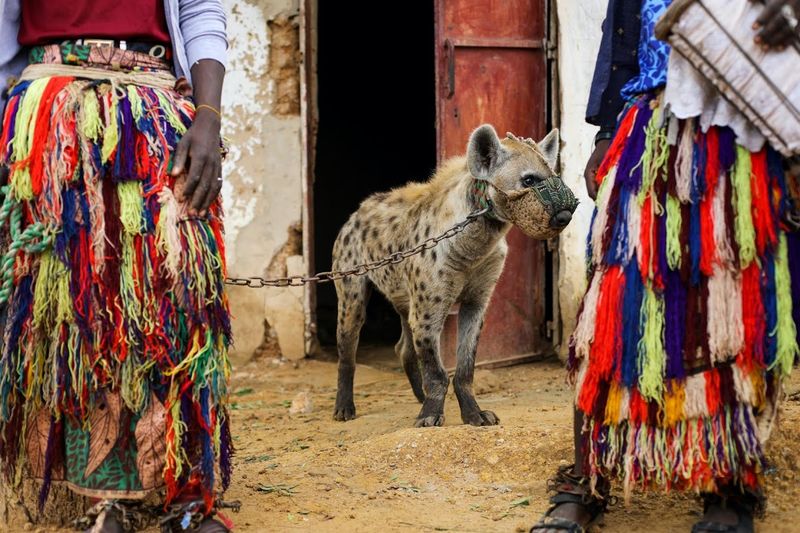
Hyenas, known for their cunning and resilience, once found themselves under the big top. Under the glare of circus lights, these adaptable creatures were trained to perform tricks that highlighted their intelligence and agility. Historically, their laughter-like calls were used to amuse audiences, masking the stress induced by training and performance.
Hyenas’ robust social structures were often disrupted by captivity, affecting their natural behaviors. Despite their undeserved reputation as mere scavengers, these animals demonstrated remarkable adaptability.
Did you know? Hyenas communicate through a complex system of sounds, gestures, and postures, showcasing their intricate social lives beyond the circus ring.

